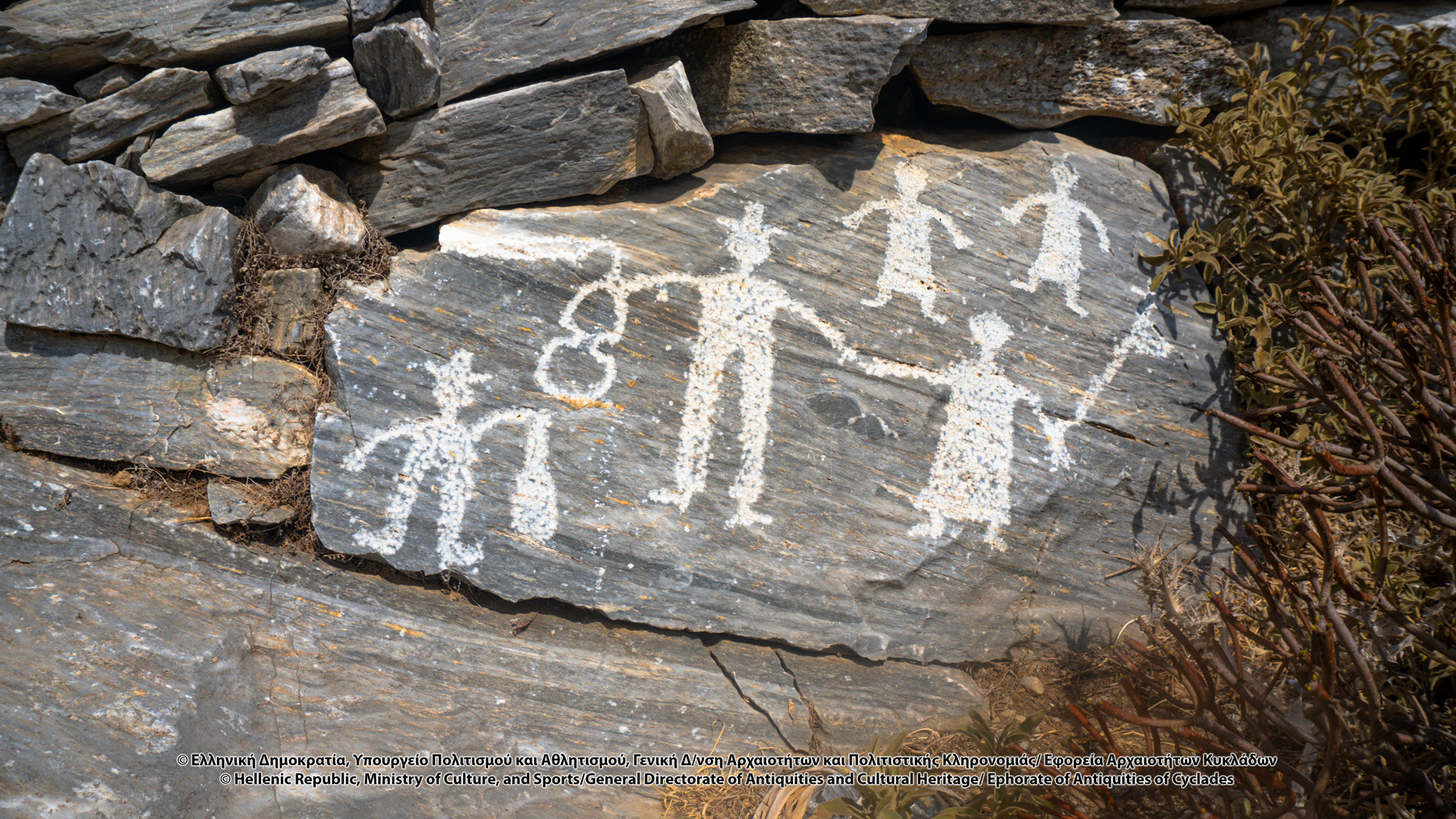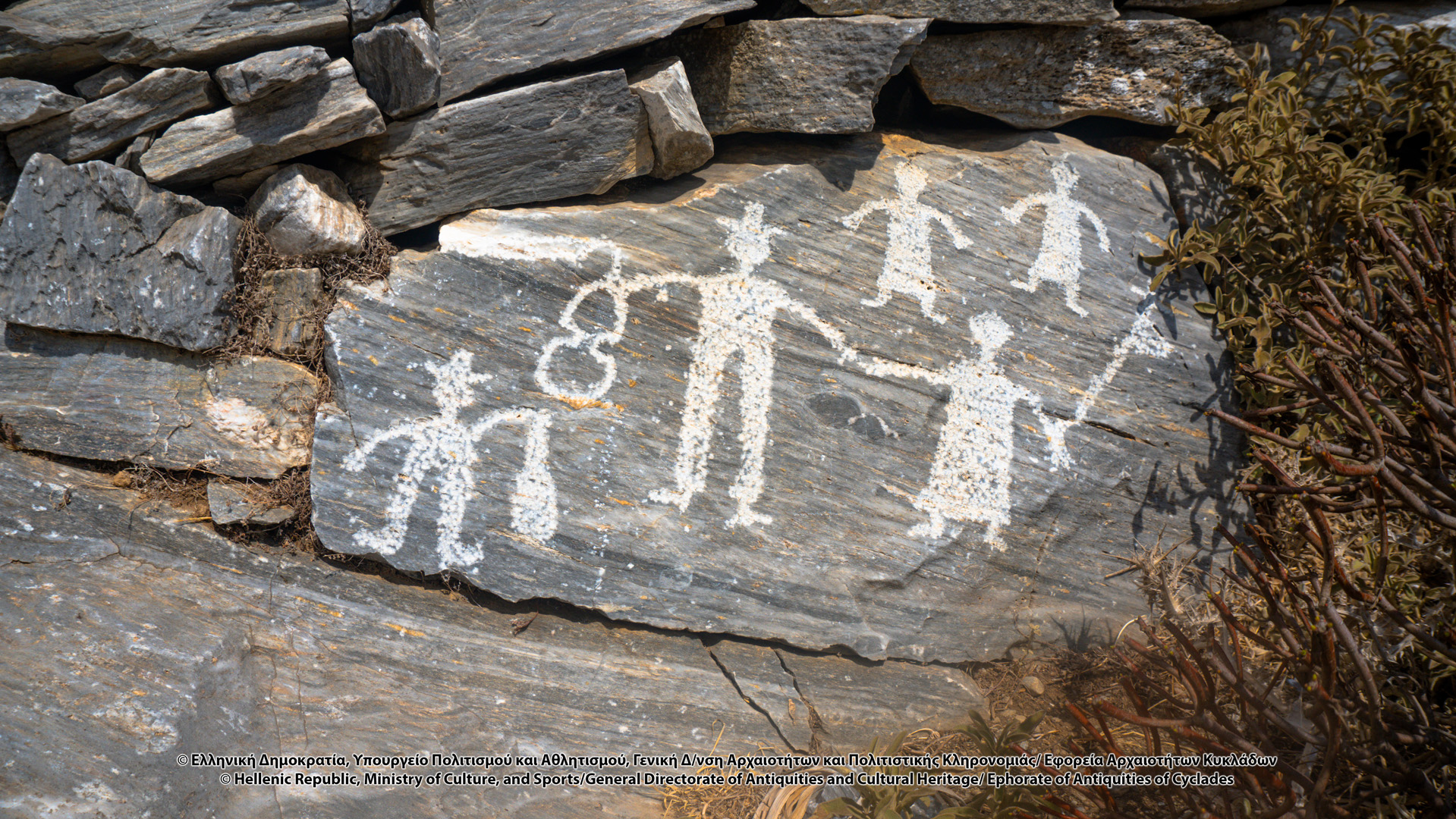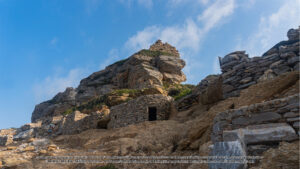Asfontylitis owes its development in antiquity to settlers in the territory of Aegiali, who chose these highlands of the mountainous area of their place to acquire arable land and pastures, setting up their houses. The long distance, 2.5 hours of walking on an inaccessible route from the nearest village, and the sufficient available arable lands, were favorable factors for their long stay there, with the result that the settlement was more densely populated than all the other places that are located radially around it (Halara, Riza, Apolakka, Okso Meria), located in their center. Asfontylitis, thus, was further developed at a residential level, acquiring all the characteristics of a permanent settlement, such as a church, square and wells, in order to meet the diverse, religious, social and practical needs of the community.
The sufficient number of arable lands, until the 50s of the 20th century, keeping the inhabitants in the settlement for about half of the year during its heyday, helped to transform Asfontylitis almost into a permanent place to live. Until the early years of the 1950s, the settlement still had permanent residents. There were nine wells within its boundaries, most of them private, but built all together, centered on a larger, public, well.
The post-war period and the great earthquake of 1956 led the inhabitants to emigrate and the settlement to decline. In recent decades, Asfontylitis has gradually become desolate. It is preserved, intact in terms of buildings and its original structure, which dates back to the early historical years, having its buildings built with the technique of dry stone. Dry stone structures are present throughout the area, delimiting properties that communicate with each other through narrow, irregular alleys.
The isolated location of the settlement, approximately in the middle of Megali Strata (or Apano Dromos, or Palia Strata), of the old path that connected the Chora with the Monastery of Hozoviotissa and Aegiali, led to a hard, ascetic life, an element which probably contributed decisively to the predominance of the special custom of the administration of the settlement, “with the inherited right”, by the King and Guardsman, always from Aegiali, who were accompanied by a Guards Office, with limited responsibilities, exclusively within the settlement.
The rock paintings on the stones of the houses and on the rocks of the settlement have been carved by Michalis Roussos, most probably a self-taught artist, who was born shortly before 1900 and was paralyzed from his adolescence. His transfer within the settlement was always done with the assistance of his family and his fellow villagers. Depending on the family errands, they took him with them, placing him where he chose and, in order to spend his time, he used to carve on the stones, as many as he could reach from his seat, drawings, names, words, and even dates, all about Asfontylitis.
According to the density of the rock paintings, Roussos’ favorite spot was the small area around the wells, where he was looking forward to seeing and talking to foreigners passing by the settlement and stopping at this point to quench their thirst and give water to their animals. The style in the drawings and the handwriting in the words are characterized by homogeneity, an element that makes it clear that they have been created entirely by the same person. Men, women and children are all depicted in an abstract way, with very long legs.
From the written dates, it appears that the rock paintings were carved within a period of about 60 years. Roussos probably began his artistic career a few years before 1900, perhaps in 1897, and stopped permanently in 1943, the year in which he probably died. The densest dates are from the last years of the decade 1910-1920, while dates from 1920 to 1940 are completely absent. The element that is completely absent from his works is the depiction of nature. Instead, his favorite subjects were images from the lives of the inhabitants, mainly scenes from festivals with musicians and dancers, figures of women and names of people. From the richness of these performances, we come to a conclusion regarding the high frequency of festivals both in Asfontylitis and in other settlements, in which his family would take Roussos with them, thus ensuring his healthy integration into the community.
The lintels of the houses were also carved, where, most likely, the carving was done before the placement of the large stone above the door, an element that allows us, in several cases, the dating of the building.
Means of access:
CAR
,
TAXI
,
TRADITIONAL PATH: "Palia Strata" Route
Chora – Monastery of Hozoviotissa- Kapsala – Asfontylitis – Potamos – Cove of Aegiali
Starting Point: "Kalogerikos" Point in the Chora.
,
TRADITIONAL PATH: Route Asfontylitis (Aegiali) – Plakes – Halara (Beach).
Opening hours:
Free
Entry fees:
Free

















